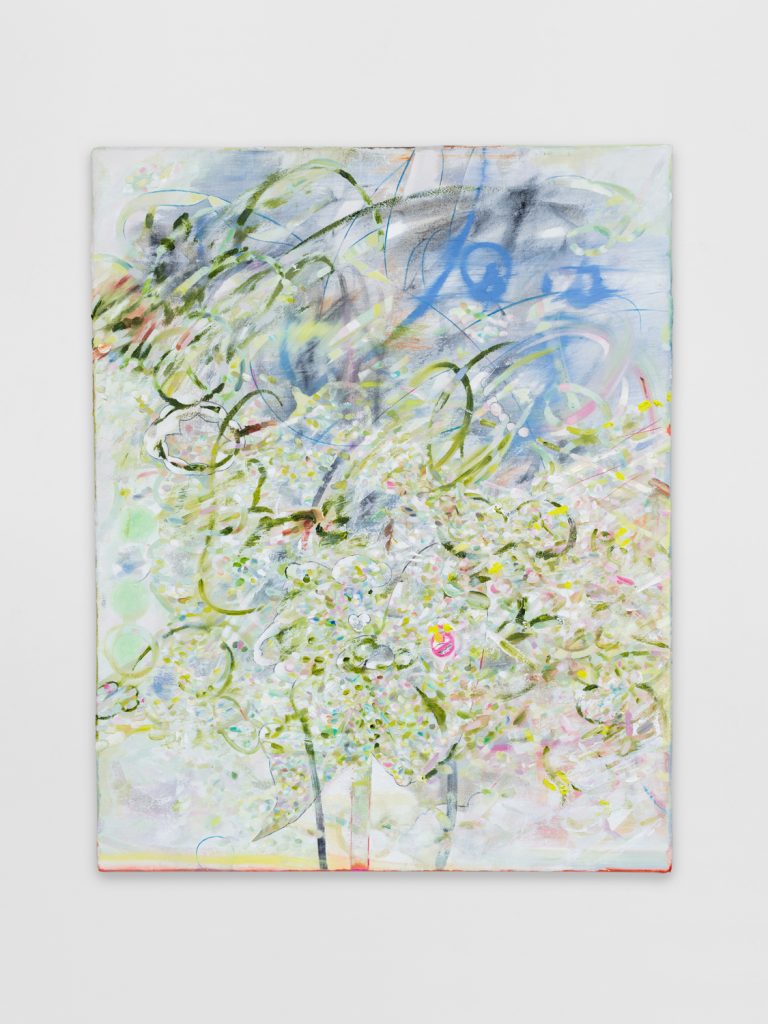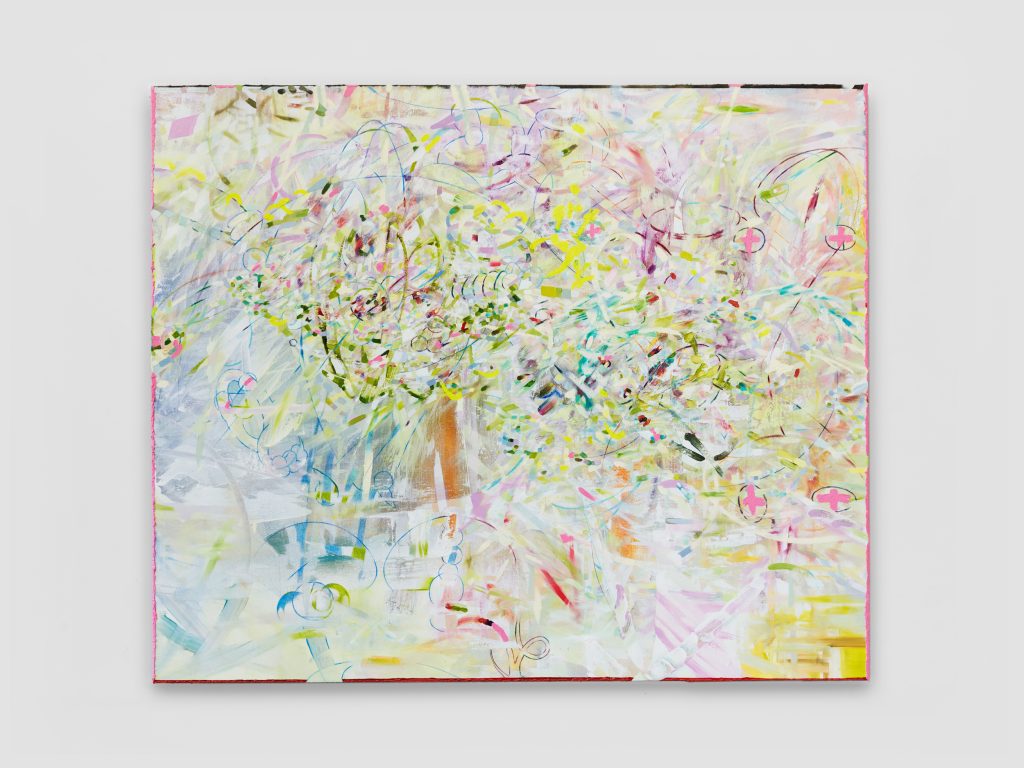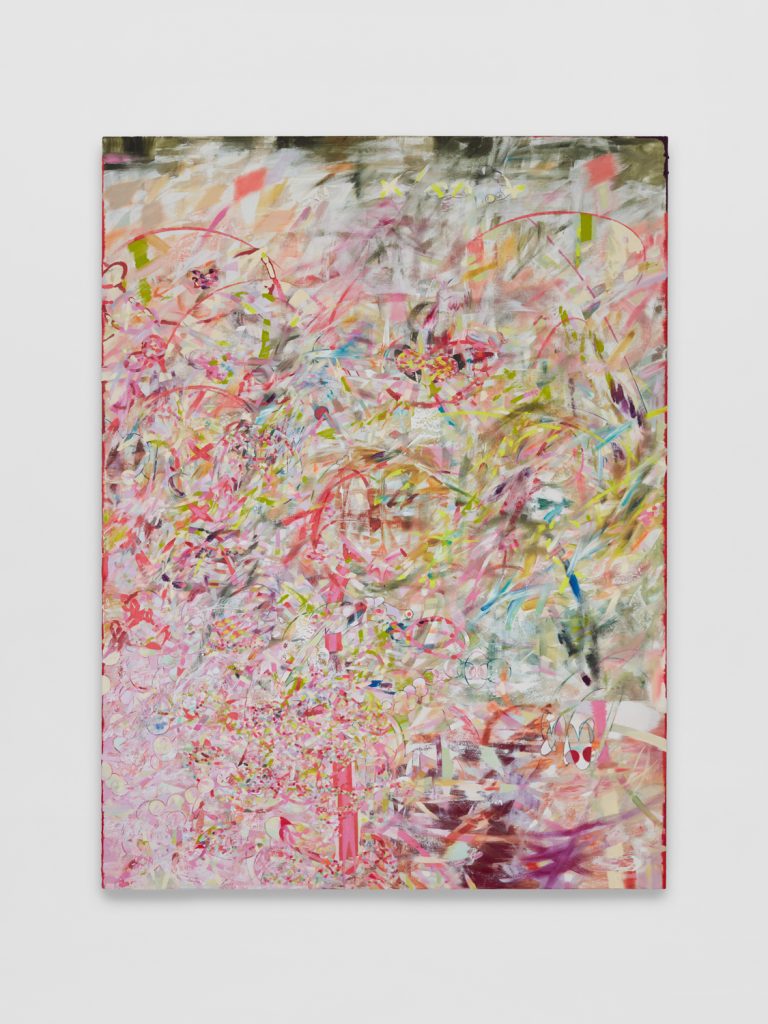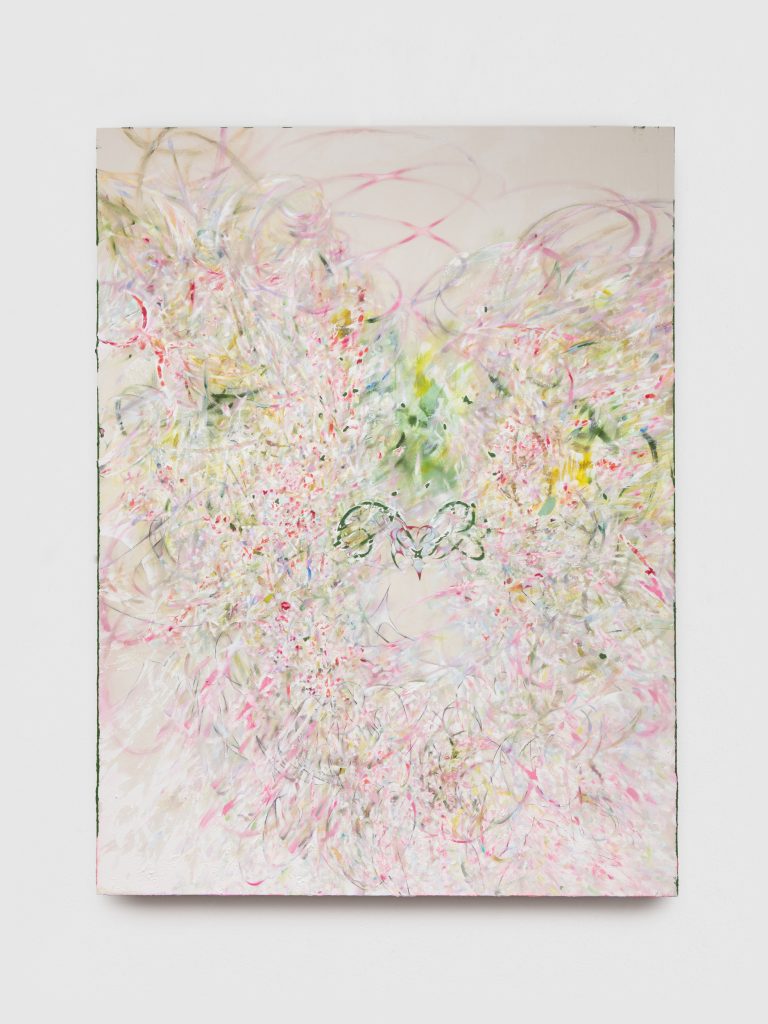Tsai Yun-Ju (b. 1998, Taichung, TW) lives and works in London. Her abstract paintings combine iridescent color and intense movement, evoking intense motions reminiscent of nature.

Tell us a little bit about yourself. Where are you from originally and when did art first enter your life?
I was born in a traditional extended family in Taichung, Taiwan, now based in London. In order to shape my early outlook, my mom enrolled me in calligraphy and ink painting classes when I was young.
Has your work always taken on the style it currently embodies?
I began with more of a focus on figuration, and then between 2019-2021 there was a clear process of transformation in my work. I think that currently, my abstract brushstrokes come from the organic texture with which I depicted every character in my previous, surrealistic paintings.

What’s a day in the studio like for you?
I’m usually in the studio from 11am – 8pm, sometimes when I get to the studio, l’ll stare at the part I finished the previous day for a while then start painting, and maintain a process of repeatedly thinking about various possibilities throughout the day, but sometimes l’lI just pick up the brush immediately and continue to create complex structures or color mixtures directly on the canvas.
What’s next for you?
I will have paintings in a group show at Tara Downs which will open on March 21, followed by a solo presentation at Independent New York in May.

From where do you draw inspiration?
Starting in 2019 and continuing to the present moment, my main inspiration comes from my imagination and connecting my childhood experiences to literature, especially The Dream of the Red Mansion, I found that I’m not only attracted to the concept of conflict or the rhetoric full of images and metaphors, but also fascinated by watching this dramatic, ever-changing process that combines refinement, ugliness, temperance and vulgarity. It affects my pursuit of morphing images and brushstrokes in my painting, I want to bring this kind of fluid transformation into my work, to create a complete cycle of viewing from the colorful surface of my works, to their core of restlessness, to a kind of harmonious coexistence.
Have you always painted in the style your work currently inhabits?
I think when I did the surrealistic ink or oil paintings before, I put more focus on narratives and creating an atmosphere. In those works, I always used more classical or somber colors, and used the Gongbi technique from ink painting to depict details of hair or the effect of rendering. During this kind of meticulous process where few accidents occurred, I found that I started trying to shift some of the orbital that were originally expected. And this displacement gradually shaped an abstract viewing perspective in my current work. Now my process of painting entails creating many countless oppositions until an image is formed that is interesting and delicate to me.

What source material do you base your work off of?
I like to follow the feelings, or a passage of words, verses and idioms, just read from a book that is full of imagery for me.
Does your work reference any Art Historical movements?
My brushstrokes and some working habits I have are influenced by my traditional ink painting training and studying art history, however I rarely refer to specific art historical movements during the painting process, more thinking about painting itself, I’m obsessed with every decision and establishing an inward trajectory.
What is your process like? How do you begin a work?
I usually pile up the paint or Gesso at the edge of the canvas layer by layer at the beginning, or by using pencil to add some thin lines to depict a rough figure or scenery. For me, the base of the work allows me to think about how I should build multi-events and multi-spaces in images step by step, with a line of escape or rupture — or creating spatial contrast between tiny brushstrokes that keep changing like a kaleidoscope and the sharp, large strokes/ scratches with a sense of speed. At this moment when all “events” are booming at the same time, I begin to enjoy the process of making various decisions. Sometimes I need to destroy the unsatisfactory parts and create new perspectives, sometimes I just need to follow my previous actions and things will fall into place, so images in the work are also revealed in this process of self-dialogue.
At the end of every interview, we like to ask the artist to recommend a friend whose work you love for us to interview next. Who would you suggest?
Tom Waring, it was very fascinating when he once shared with me his mixing and research of paints.
